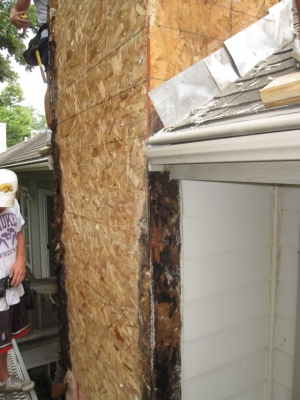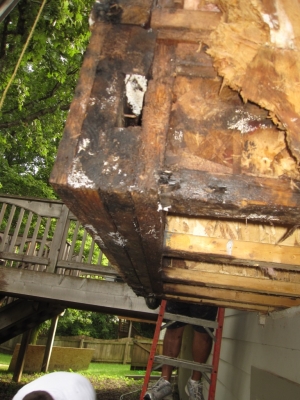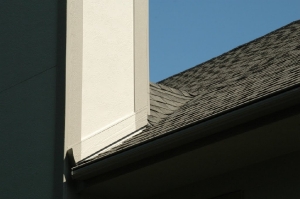- Categories:
- Moisture Intrusion
- Roof Damage
This was a post I originally posted on a friend’s site.
Today’s guest post is from my friend Mark Parlee. Mark is a builder and building consultant who deals with moisture intrusion and construction defects reporting in the greater Des Moines, Iowa area. My first introduction to Mark was when I read his excellent article written for the Journal of Light construction on rescuing a manufactured- stone veneer house from water intrusion.
Mark and I both comment on the Journal of Light Construction Contractors Forum, he is starting his own blog and that’s how we started talking. It is my hope that Mark continues to share his experiences and expertise by occasionally guest posting and commenting at A Concord Carpenter Comments. Moisture intrusion into the building envelope is, I believe, one of the biggest problems we face today in construction.
The big cause of this is not going quite far enough with proper flashing details at the time the structure is being built and not fully grasping just how intrusive wind driven moisture can be.
We also see a lot of materials used in ways that were not intended to be used; the example below is cement board siding used for riser material on an entry stair.
Pouring the stoop over the siding is another big one I see frequently. Over time, this siding material will degrade and increase the potential for rot behind the siding and the entry of moisture into the building envelope.
Proper clearances are another big one that will lead to degraded siding if not followed. 90% of the homes built in my area and any area I have ever visited do not have the required clearances from the roof plane.
Here is a fireplace chase on a home that is only five years old.
We opened it up and this is what we saw. If this flashing had been installed correctly none of this damage would have taken place.
This damage extends all the way to the floor system.
A completed repair; notice the Kick-out diverter at the gutter edge. If one of these had been used originally all of this damage would have been
prevented.

The cricket on the up-roof side was also extended to divert moisture past the corner of the chase. Another view of the Kick-out diverter. These are by DryFlekt. With all of the damage I have seen in homes, I am still surprised at the amount of damage I see when renovating a home’s exterior or making a repair. A lot of the problem can be attributed to not reading and following manufacturer’s installation instructions.
Mark owns Parlee Builders with his wife Patti. Mark has been in the construction business for 34 years, balancing subcontracted framing and siding projects with home building and remodeling. He is well-respected for his craftsmanship, as well as his integrity as a businessman.













